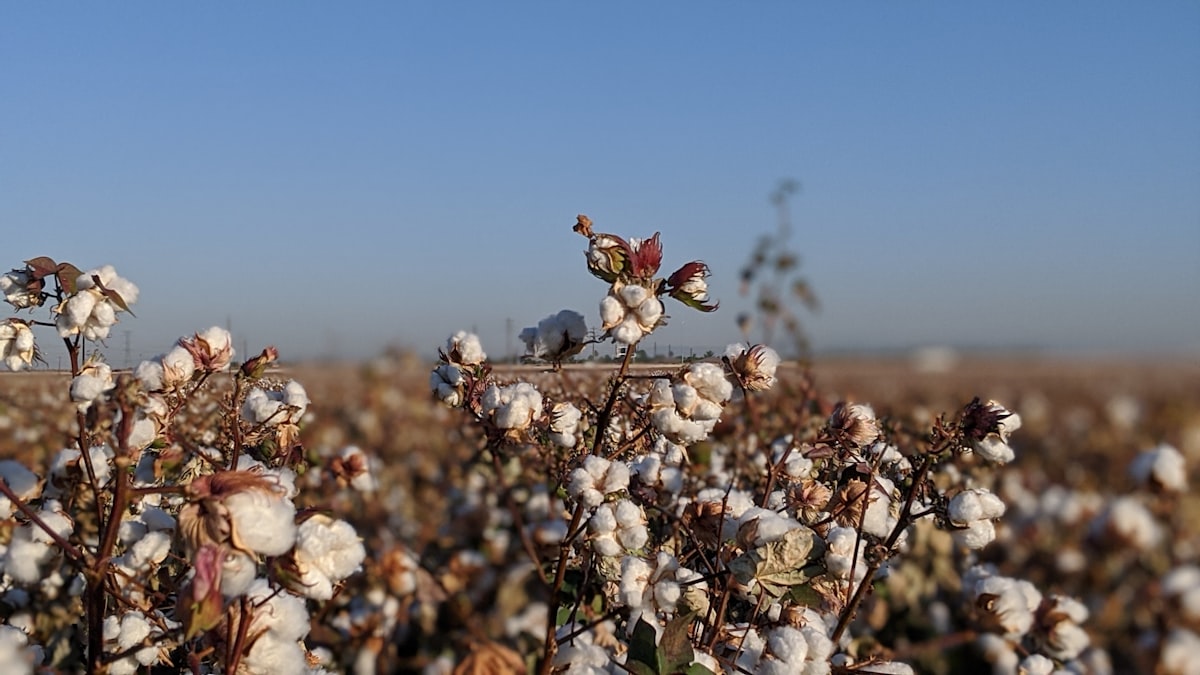The topic of cotton was already discussed on our blog in June, it mainly concerned cotton used in sewing trousers and jackets. Today we will look at cotton used in the production of shirts and underwear.
Cotton is the basic fiber that is used in the production of clothing. It is of plant origin and is obtained from cotton seed. After their flowering, the seed capsule is formed, which breaks during maturation and releases cotton wool outside. Once harvesting is done, cotton is carded and combed to remove any impurities, spun and dyed if needed. In the process of spinning, the cotton yarns are twisted to make it stronger and more continuous. The appearance of the yarn can be freely changed by changing the size and direction of the twist. The more twists, the smoother it is, and the less it is, the softer and fluffy it is.

Cotton is quite a capricious plant and is grown primarily in tropical and subtropical regions. It requires well-cultivated soils, abundant organic and mineral fertilization, a warm climate with frequent rainfall (during plant development) and drought (during maturation and harvesting). Hence, Egypt has been the most valued country producing cotton of the highest quality for centuries. Surely, you've heard about Giza cotton, which is simply one of the varieties grown in Egypt and highly valued for its fiber length. The longer the fibers are, the greater guarantee of the quality of the yarn. Due to the length of the fibers, they fall into two categories: extra-long staple cotton (ELS) and long staple cotton (LS) and Giza leads the way in both categories.
Giza 45
Giza 45 is considered to be the best type of Egyptian cotton due to its extraordinary properties. It boasts one of the longest threads, often exceeding 36 mm. It has very fine fibers with an average thickness of 2.95 microns being at the same time very tear-resistant. Thanks to all these factors, raw Giza 45 produces soft, extremely strong and flexible fabrics with a delicate, even silky feel. Giza 45 cotton is grown only in a small area around the Nile Delta and accounts for about 0.4% of the total annual cotton production in Egypt. Hence its attractiveness and very high prices.

Sea Island cotton
Sea Island cotton is another type of cotton belonging to the "gossypium barbadense" variety discovered in the early 18th century in the British West Indies. Currently, its production is focused mainly on Barbados and Jamaica, areas that are considered a true climate paradise. Thanks to the ideal amount of sunshine, rain and humidity the cotton grown there is classified as extra long staple cotton (ELS). The yarn is inspected and certified by the West Indian Sea Island Cotton Association (WISICA), the governing body that guarantees the purity of the material. Thanks to the manual harvesting of cotton seeds and the use of traditional processing methods, it is the most precious raw material with unique properties. Thus, one of the most expensive on the market.

Another point that we want to discuss is the weight of the fabric, the thickness of the fibers and what 2-ply means. Let’s start with the weight, which is quite simple - the number of grams given on the cotton label tells us simply how much 1 meter of fabric weighs. In general, materials with a higher grammage will crease less and are also considered to be more durable. On the other hand, the thicker the fabric, the stiffer it will be.
The thickness of the fiber is expressed by the numbers (60, 70, 80, 90, 100, 110, etc.). The thinner it is, the higher the number it gets. Fine threads, suitable for a pleasant-to-touch shirt, start at 100. The higher the value, the nicer the fabric feels.
And then there is 1-ply, 2-ply, 3-ply. The 1-ply thread simply means that it is made of a single fiber. The 2-ply thread is created by twisting 2 cotton fibers together. 2-ply gives the fabric a natural elasticity which makes it less prone to crease and gives an overall cleaner look.
If you have already had the adventure of ordering a made-to-measure shirt, you probably have come across numerical markings on cotton fabrics such as "120/2 × 120/2". This is called yarn count. The first pair of numbers is the warp, the second is the weft. 120 here refers to the thickness of the fiber. Whereas 2 means two-ply. The exemplary description shows that the fabric was made of identical wefts and warps. They are two-ply fibers, 120 thick.

To sum up, when choosing a fabric for shirts, you should pay attention to the thickness of the fibers, their structure and the weight of the fabric. It is very important to consider how you are going to use it e.g. for elegant formal shirts, we recommend thinner 2-ply cotton with longer fibers to make the fabric silky and shiny. Another topic will be the weave of the fabric, but we will talk about that in another article.